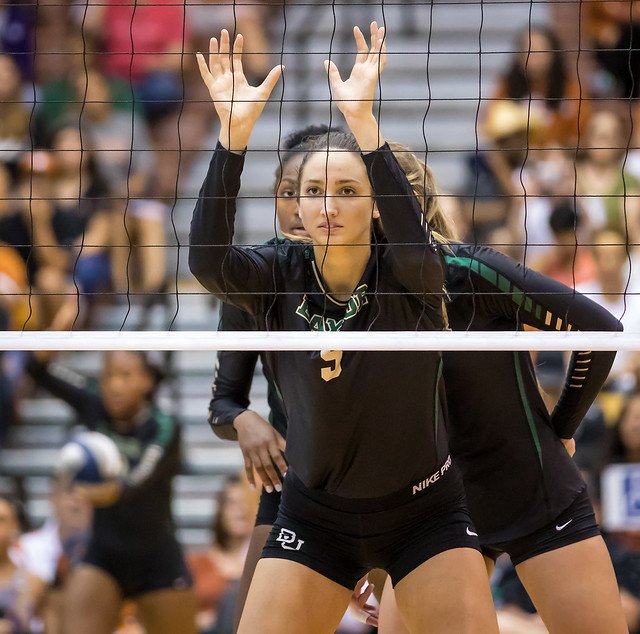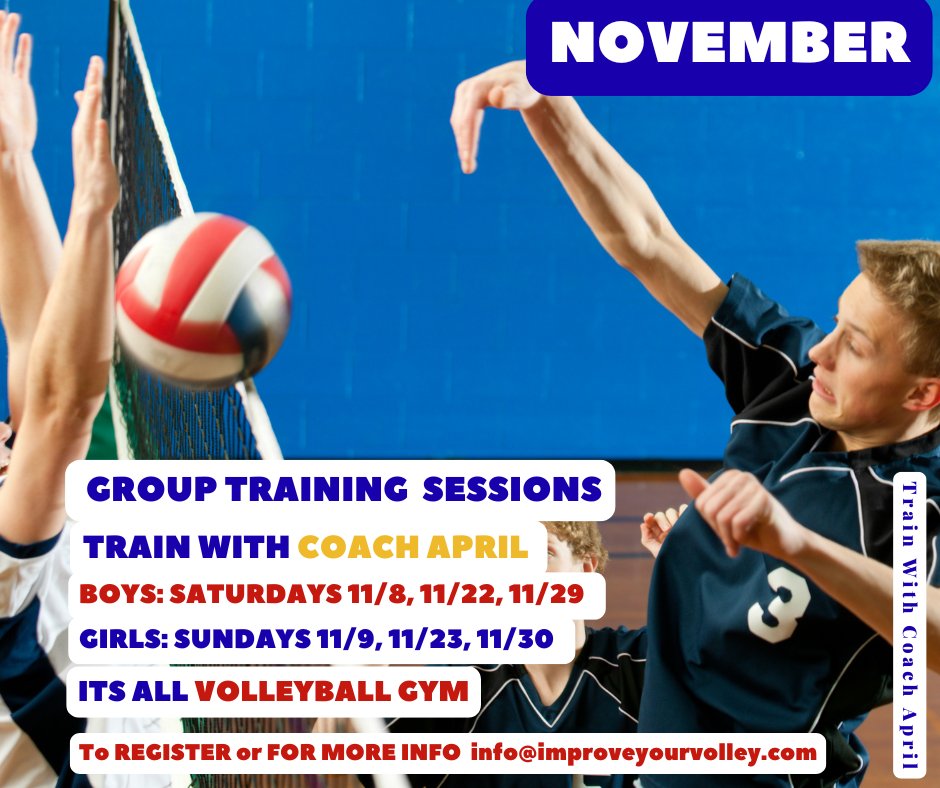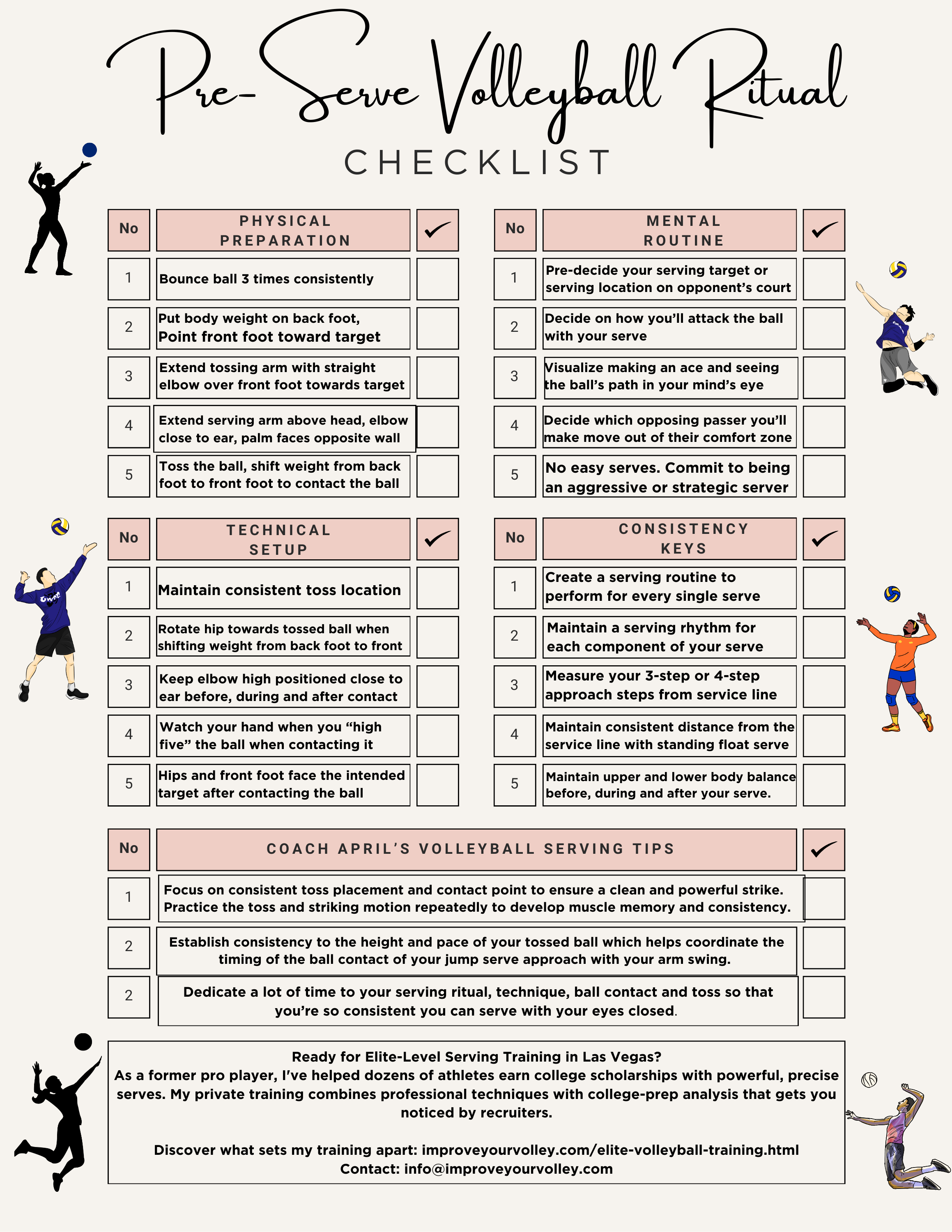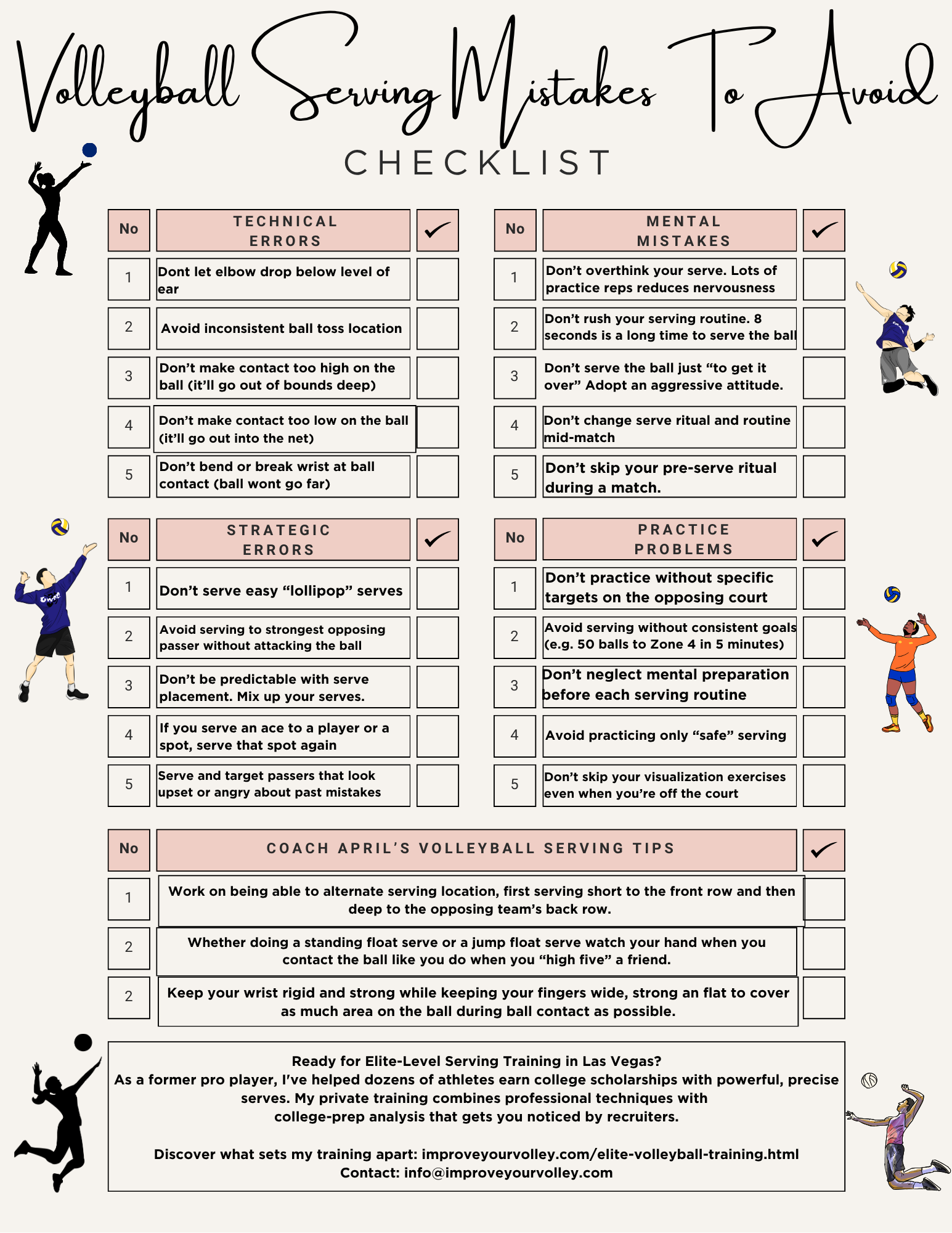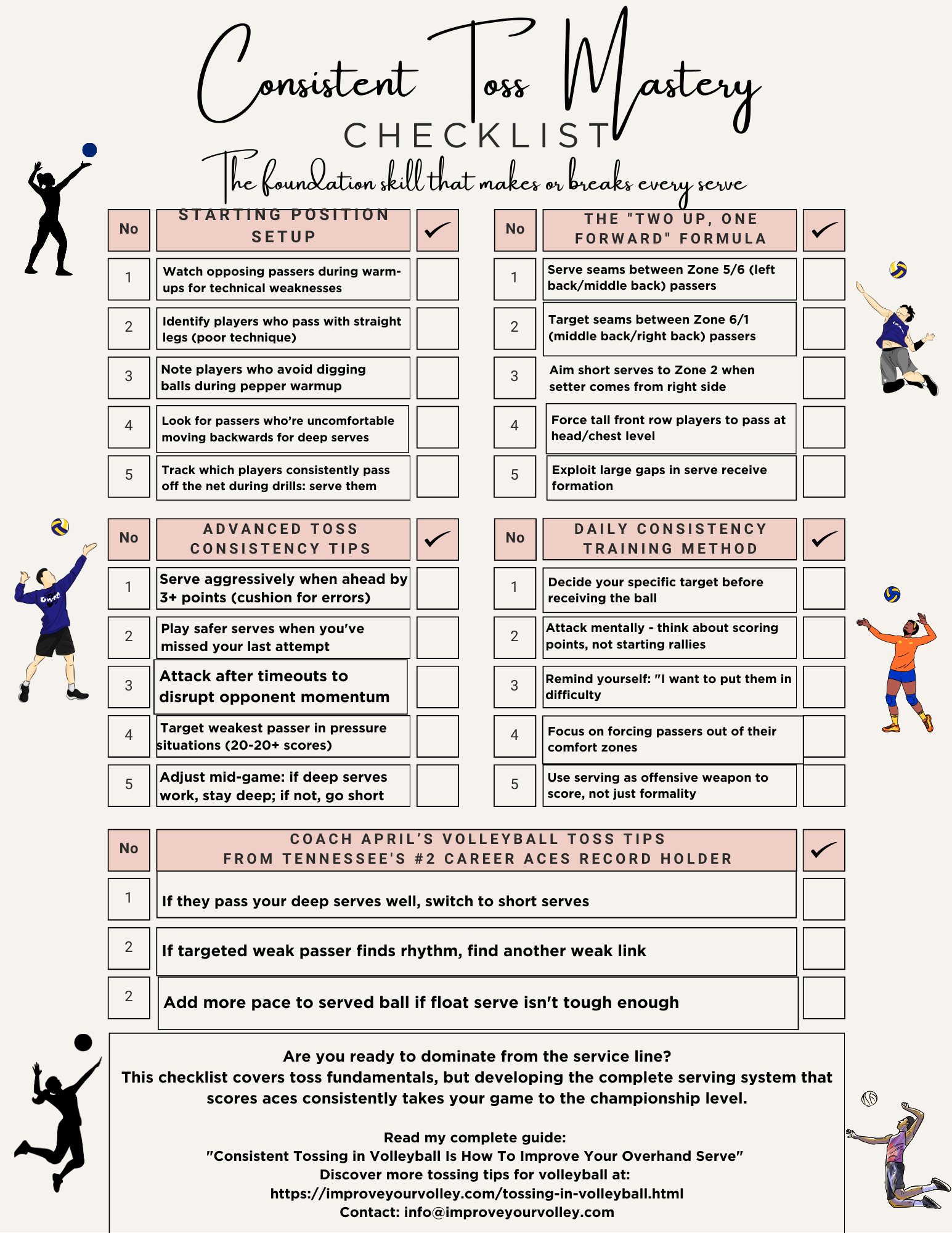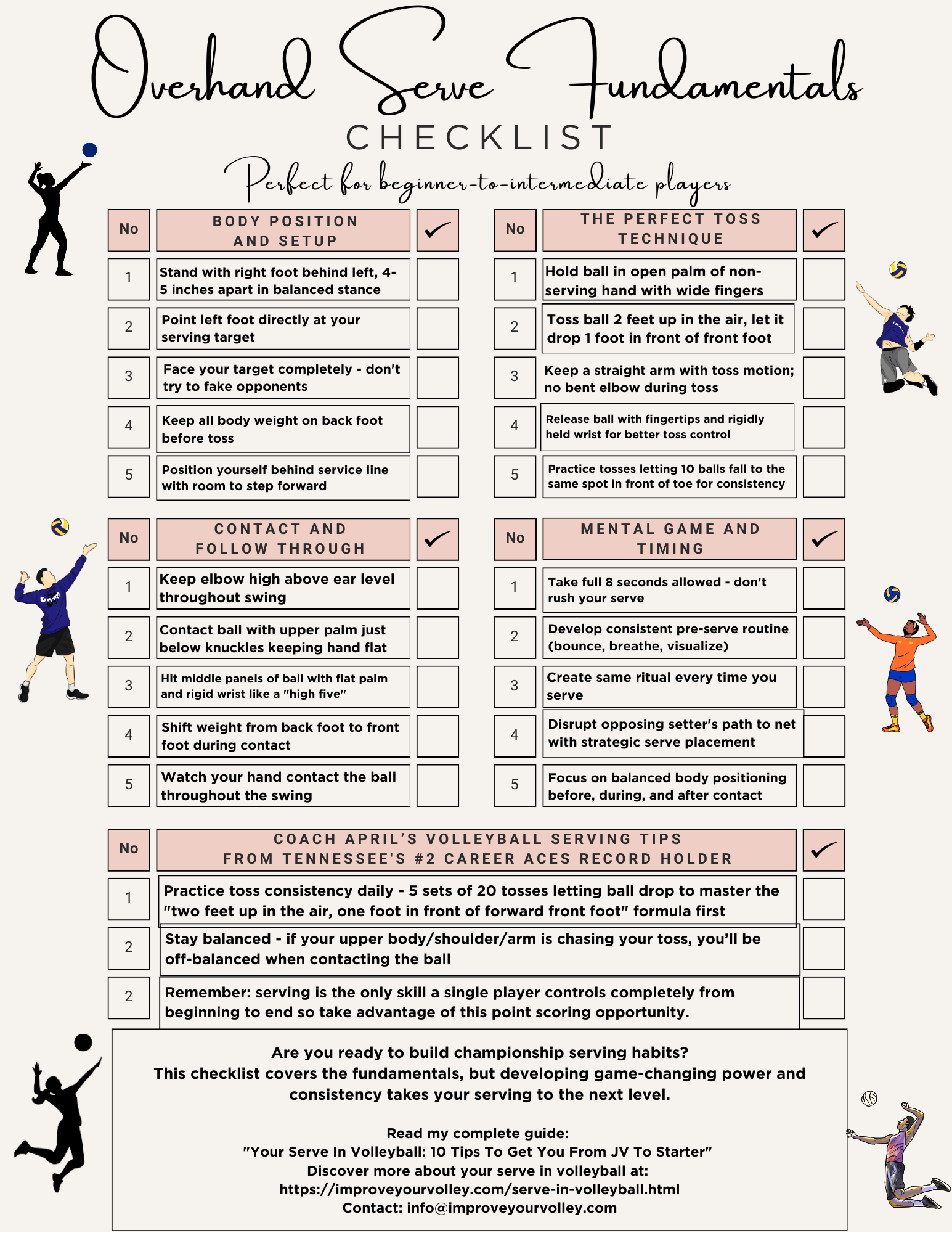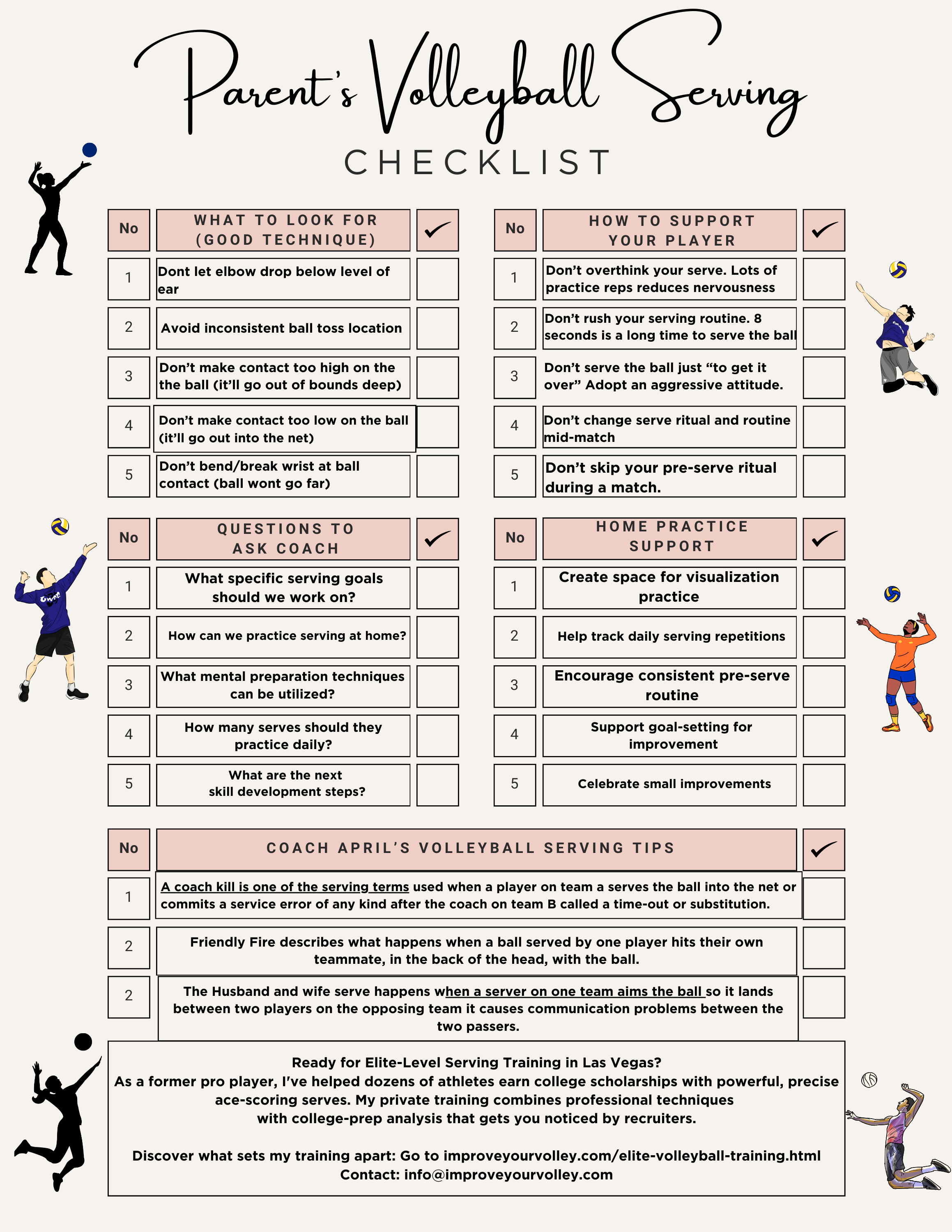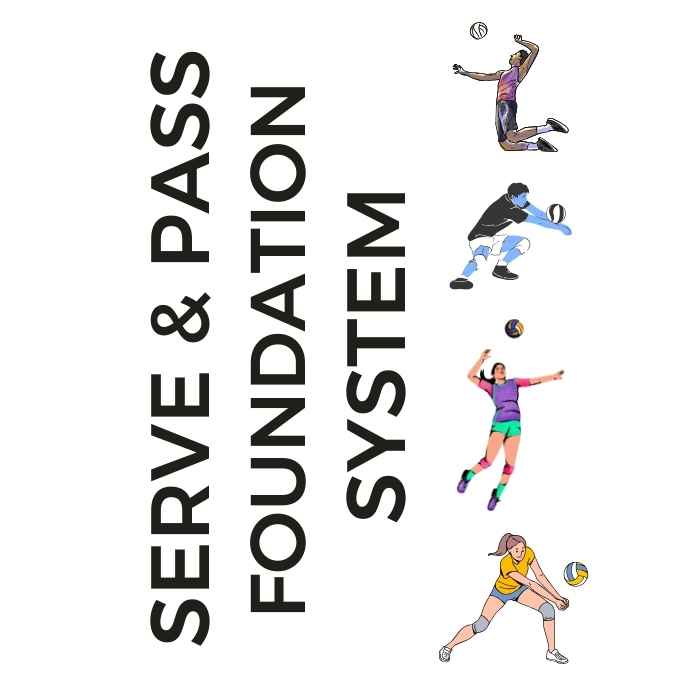
Serve + Pass Foundation System: The Complete Skills Arsenal The two-skill mastery system that transforms inconsistent players into the athletes coaches build their lineups around. Stop Struggling With The Two Most Important Skills In Volleyball!
- Improve Your Volleyball with Coach April
- Volleyball Game Rules: Serving, Score,
Volleyball Game Rules: For Scoring, Skills, Rotation and Regulations
Volleyball game rules review the regulations for basic skills, scoring and for playing actions allowed and not allowed in the game along with rotation rules.
These volleyball game rules review the regulations for basic scoring and for playing actions allowed and not allowed in the game.
Volleyball Game Rules
The Net
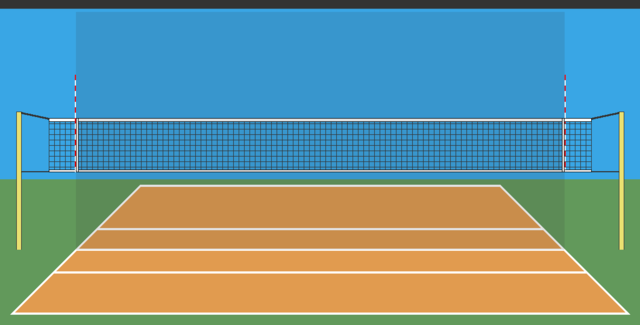 The net's purpose is to separate the two opposing teams and to create a barrier for the ball to cross over after being contacted a maximum of three times by each team.
The net's purpose is to separate the two opposing teams and to create a barrier for the ball to cross over after being contacted a maximum of three times by each team.The net is placed on top of the centerline and runs parallel to the end lines and perpendicular to the sidelines.
According to official volleyball game rules, the net's purpose is to separate the two opposing teams and to create a barrier for the ball to cross over after being contacted a maximum of three times by each team.
The official volleyball net height in the women's game is 7 feet 4 1/8 inches.
For the men's game the official net height is 7 feet 11 5/8 inches.
Volleyball Game Rules
Don't Touch The Net
- You cannot touch the net while the ball is in play.
Volleyball Game Rules
Serving Rules
- If you serve the ball over the net and the ball touches the net on its way over, then bounces into the opposing team's court
a) the ball hits the floor - if it hits the floor inside the opposing team's half court then its a Point for your team. Your team gets to serve again. This is called an "ace" serve.
- If you serve the ball over the net and the ball does not touch the net on its way over, but lands outside the opposing team's half court
a) ball is out of bounds. This is called a "sideout."
Point goes to the opposing team because you served out of bounds. Opposing team gets to serve.
- If you serve the ball into the net and the ball does not cross over the net into the opposing team's half court
 Thanks for visiting. Be sure to check out more of my volleyball passing articles by clicking one of the links below! (April Chapple)
Thanks for visiting. Be sure to check out more of my volleyball passing articles by clicking one of the links below! (April Chapple)Do You Follow Me on Instagram?
Follow me on Instagram @coach_apchap to improve your game even faster!
I share alot of individual, partner and easy-to-do volleyball serving drills we do in class with my followers.
Many of these volleyball practice drills you can do at home by yourself or try at your next practice with your teammates.
If you're a B team or JV player trying to make varsity next year...your goal should be to complete 1000 reps a day of at least three of the basic skills on your own...volleyball passing, serving and setting should be at the top of the list.
Rules of Volleyball: Where Do You Go From Here?
Good times! Where do you need to go now? Here are three options:
- Learn more about the Rules.
- Follow the suggested reading on our Sitemap page Learning How To Play (Sitemap)
- Or visit the pages in the Volleyball Rules section in the drop down menu at the top of the page.
If your athlete struggles with consistent serve receive, gets subbed out, or is overlooked for playing time—this is the fix you’ve been looking for.

Struggling with passing consistency?
I help talented passers tired of getting pulled from games because of inconsistent serve receive skills BUILD passing confidence without expensive private lessons using the same 3-step system that's helped dozens of my athletes get recruited.
Download my eBook for $17.99 and start building the passing confidence that keeps you on the court—and gets you seen by college coaches.
From Lady Vol to Legend: Coach April Produces Powerful Passionate Players...is that you?
What Are You Looking For?
Click to Download Your Pre Serving Ritual Mastery Checklist pdf:
🎯Volleyball Pre Serving Ritual Guide -
Players! Learn How To Transform Your Serve from Weak to Weapon
Click to Download Your Parent's Volleyball Serving Checklist pdf
🎯Parent's Volleyball Serving Checklist Guide
Parents! Help Your Player Develop Championship Serves (Even If You've Never Played)

Hi there!
Thanks for stopping by. Hope you learned something today that will help you reach your volleyball goals.
Be sure to subscribe to my email newsletter so you can learn more each week!
Stay strong! Stay motivated!
-Coach April

SUSCRIBE to my email newsletter below!
 Click to learn more about the weekly volleyball classes and clinics or email info@imrpoveyourvolley.com for information
Click to learn more about the weekly volleyball classes and clinics or email info@imrpoveyourvolley.com for informationCongratulations to my seven Boys-18s Vegas Volley club players who played in two state championship finals yesterday, the 3A and 5A State champinship finals at Sunrise Mountain High School.
TOURNAMENT CHAMPIONS!
A-1 Vegas Volley VBC
In It To Win It Tournament
May 2 - 4, 2025 Tournament
Gold Medalists
18s Premier Division
Vegas Volleyball's Unsung Heroes: Celebrating Moms with Peace Love Volleyball Shirts
Ready to energize your volleyball mom journey?
Subscribe to my 'Producing Powerful Passionate Peaceful Players' email list above on ImproveYourVolley.com.
You'll receive energy-boosting tips, exclusive insights from me, Coach April Chapple on maintaining momentum in volleyball.
Let's power up the Vegas volleyball scene together!
Recent Articles
-
5 Essential Serving Tips from Tennessee's #2 Career Aces Record Holder
Dec 09, 25 11:39 PM
I've identified the 5 essential serving tips that separate confident servers from struggling ones and you'll serve with the confidence that creates aces -
The Volleyball Toss How Consistent Is Your Ball Toss Before You Serve?
Dec 07, 25 12:29 AM
The volleyball toss for the overhand serve needs to consistently be two feet up in the air and one foot in front of front foot which puts the ball in front of your serving arm. -
Shop Small: Real Volleyball Training With + Results From A Real Coach
Dec 03, 25 10:30 AM
Support a woman-owned business. Get training from a former elite pro with 13+ years coaching experience. Ditch the big box store--invest in proven results.



